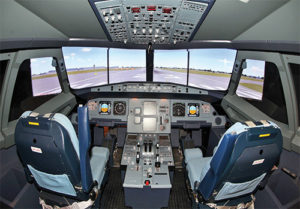Amber Dubey, Partner & Head of Aviation, KPMG
AIBM
April - June 2017
Availability of world-class skilled professionals has been a crying need of the Indian aviation industry for a very long time. Realising this, all the stakeholders have supported skill development at a war footing, says Amber Dubey, partner and India head of aerospace and defence, at the global consultancy, KPMG, in an interview to AIBM.
A comprehensive skill gap analysis of the civil aviation sector in India had estimated one million direct jobs by 2035. How have the different stakeholders taken up the challenge of skilling one million people?
With the unprecedented growth in the Indian aviation sector, all stakeholders have supported skill development at a war footing. Various stakeholders, including the Ministry of Civil Aviation (MoCA) and industry players have come forward to support skill development in aviation through the Aerospace and Aviation Sector Skill Council (AASSC), and on-the-job training (OJT) by leading industry players as well as by privately owned skill-development agencies.
The AASSC had identified 70 job roles for development and formulation of National Occupational Standards (NOS) and Qualification Packs (QPs). What are the steps being taken to implement them?
The National Occupation Standards and Qualification Packs are currently under development and are likely to be finalised soon. The National Skill Development Corporation (NSDC), MoCA and industry players have been most supportive of this initiative. As per government norms, the QP-NOS have to be approved by the industry before being approved by NSDC, so that there is complete buy-in from the industry.
AASSC and MoCA have facilitated extensive discussions between the QPNOS drafting team and industry players to make the job roles extremely practical, futuristic and in line with industry needs. This is important to ensure near 100 pc placement of trainees.
Recently, several multi-national companies are setting up their skilling academies in India. How is this trend shaping up?
Aviation is a global industry with global norms. Availability of world-class, skilled professionals has been a crying need of the Indian aviation industry for a very long time. Various international players have noticed this demand–supply gap and are establishing their skill academies in India. Academies in India will serve not just the domestic market, but also other countries in the region.
Last April, AASSC had signed a MoU with KPMG Advisory Services to develop national occupational standards for various job roles in the sector. What is the progress in this regard?
The QP-NOS are in their final stages of development and approval, and will be released soon.
Is the model developed by the AASSC globally competitive?
Aviation works under global norms. Any aviation curriculum developed in India has to be globally valid.
What is the current intake of apprentices each year by players in the public and private sectors in India?
It is around 5,000 per annum.
There are apprehensions that automation will eat up millions of jobs. Do you think it will have some impact on aviation? If so, do projections of skilled manpower need to be revisited?
No. We don’t anticipate significant job losses in the aviation sector due to automation. Some manual services, such as check-in counters may see reduced employment due to automation. But, other skilled professions, such as cockpit crew, cabin crew, maintenance, air navigation, ground handling and so on will require increasingly more skilled resources, given the high growth rate being observed in the Indian aviation sector and development of new airports in India’s interiors.
Thousands of trained pilots/aircraft maintenance engineers in the country are currently unemployed. What do you think is wrong with their training?
Most of the training provided in India is as per international norms and regulations. The Directorate General of Civil Aviation (DGCA) keeps a close eye and defaulting academies invite penal action. There are indeed some pockets of unemployment due to a temporary oversupply of talent. With the prevailing low crude oil prices, high competition among airlines and strong government support, the Indian aviation industry is likely to continue on its high growth path. This high growth will continue to create significant job opportunities for well-skilled professionals.











